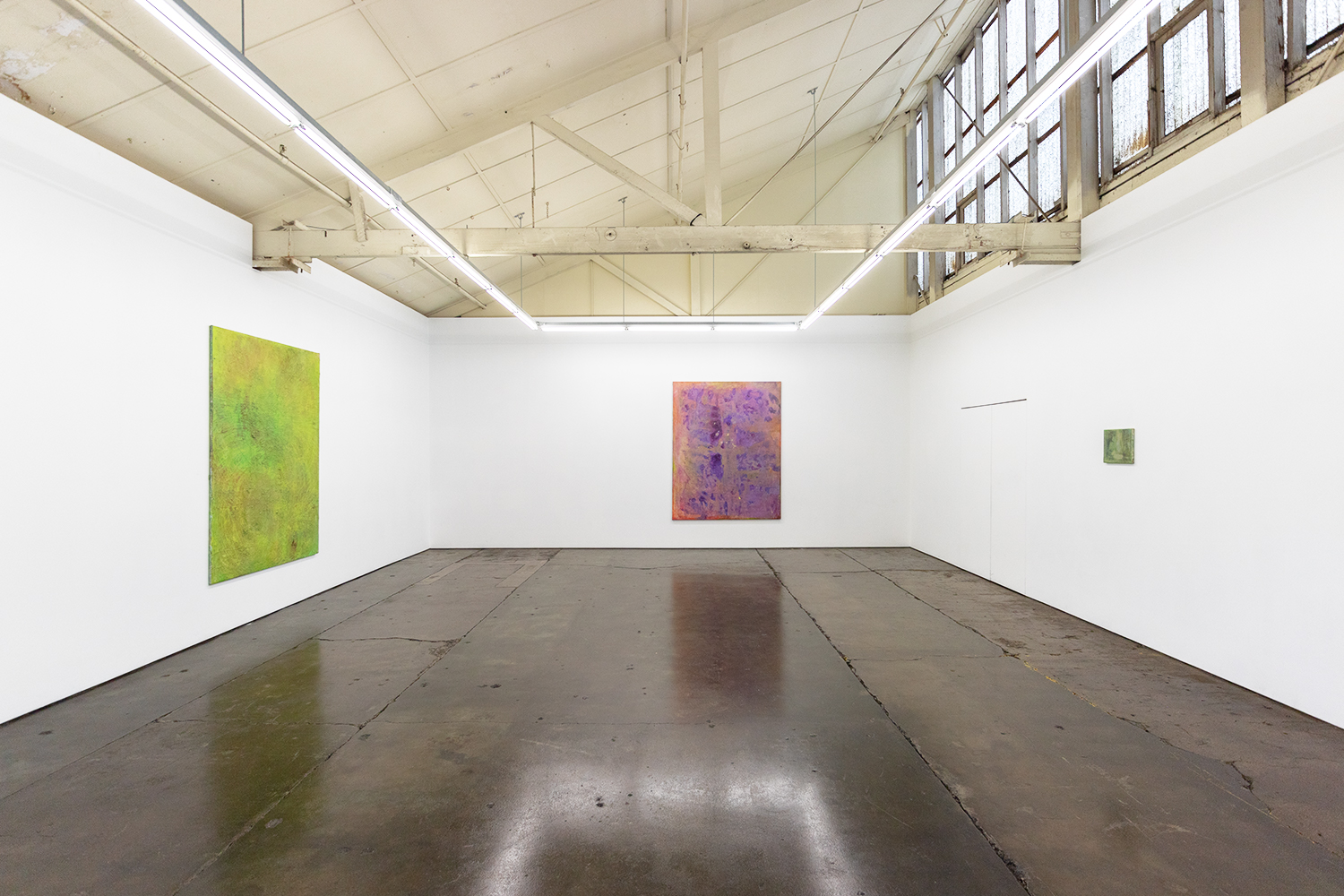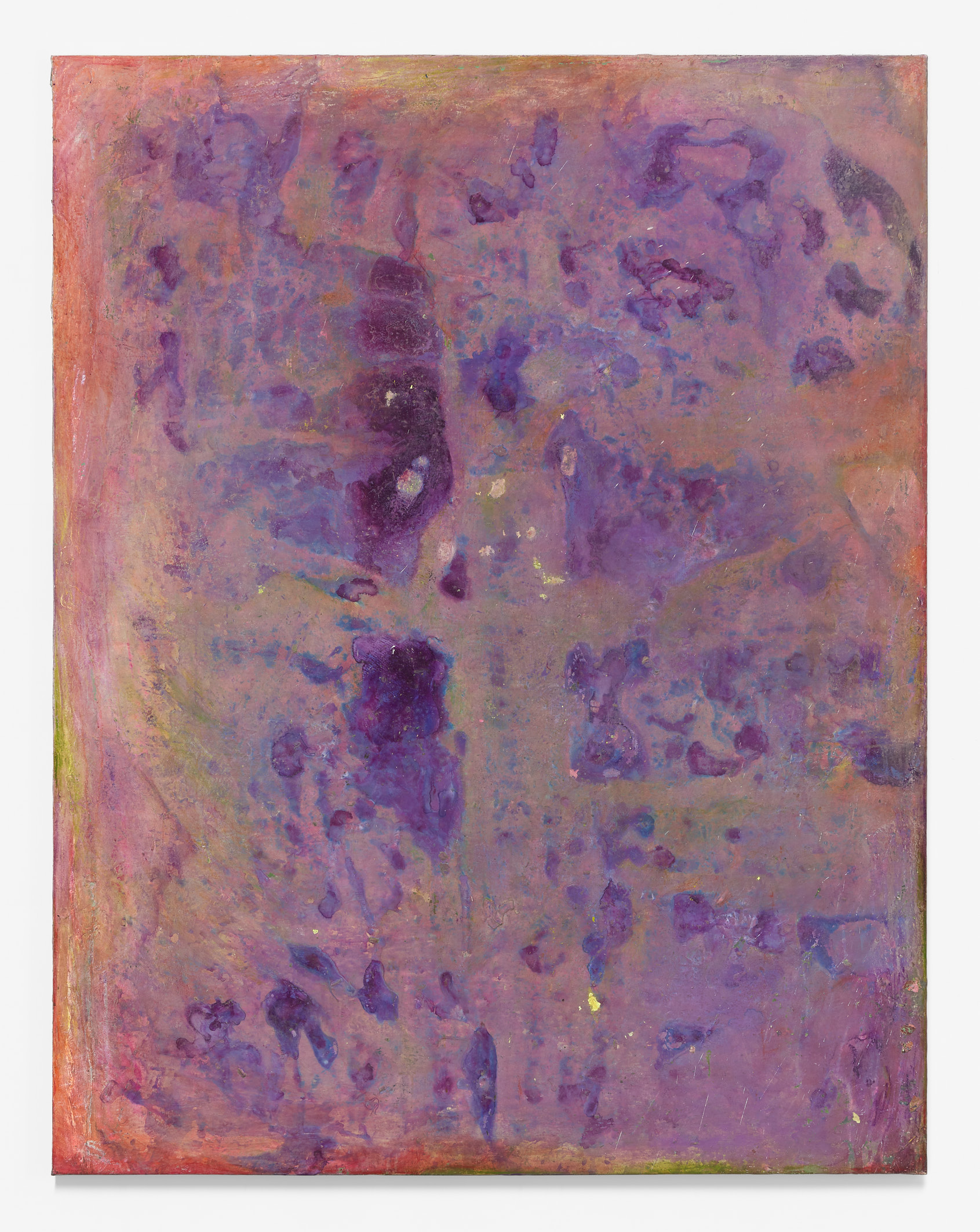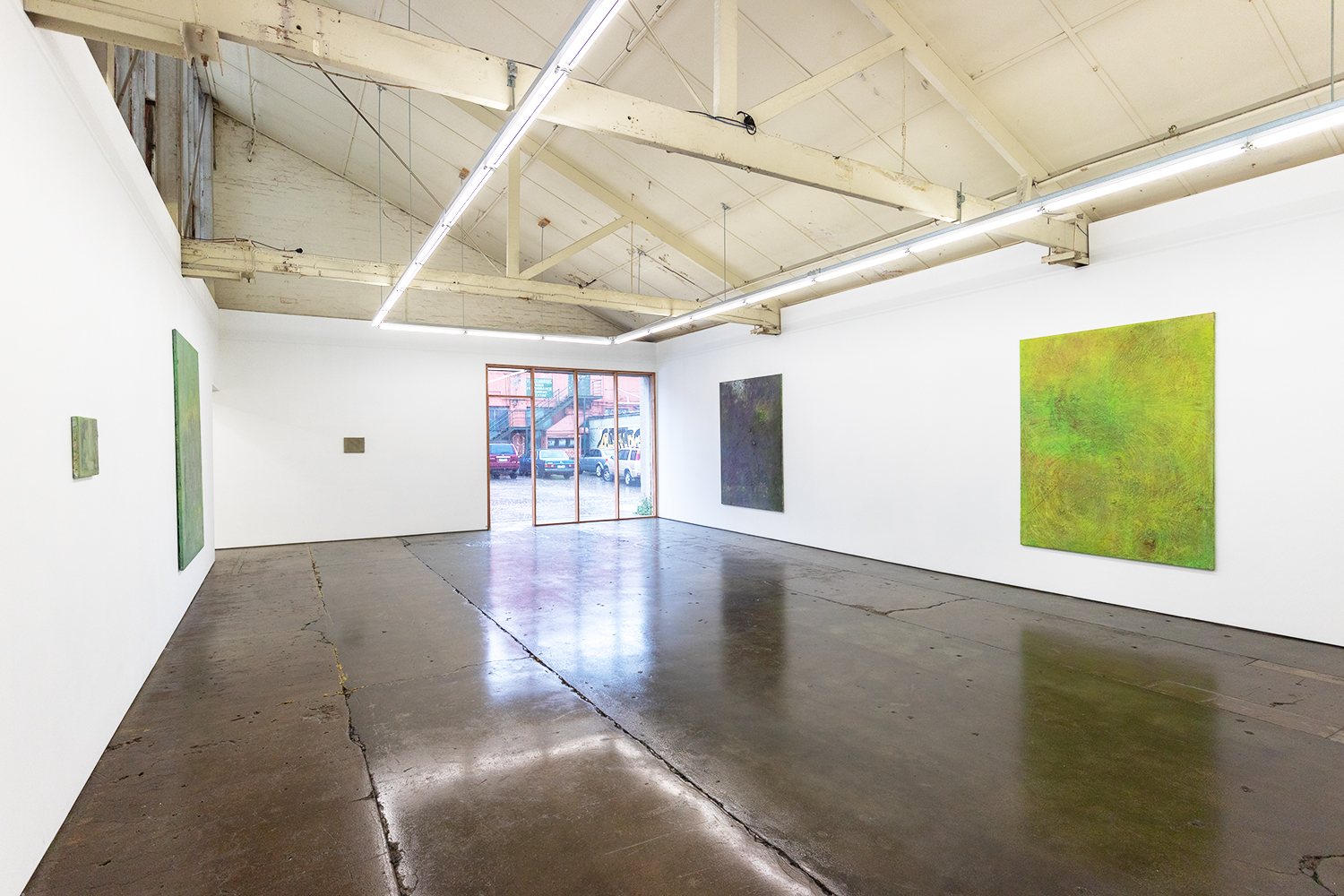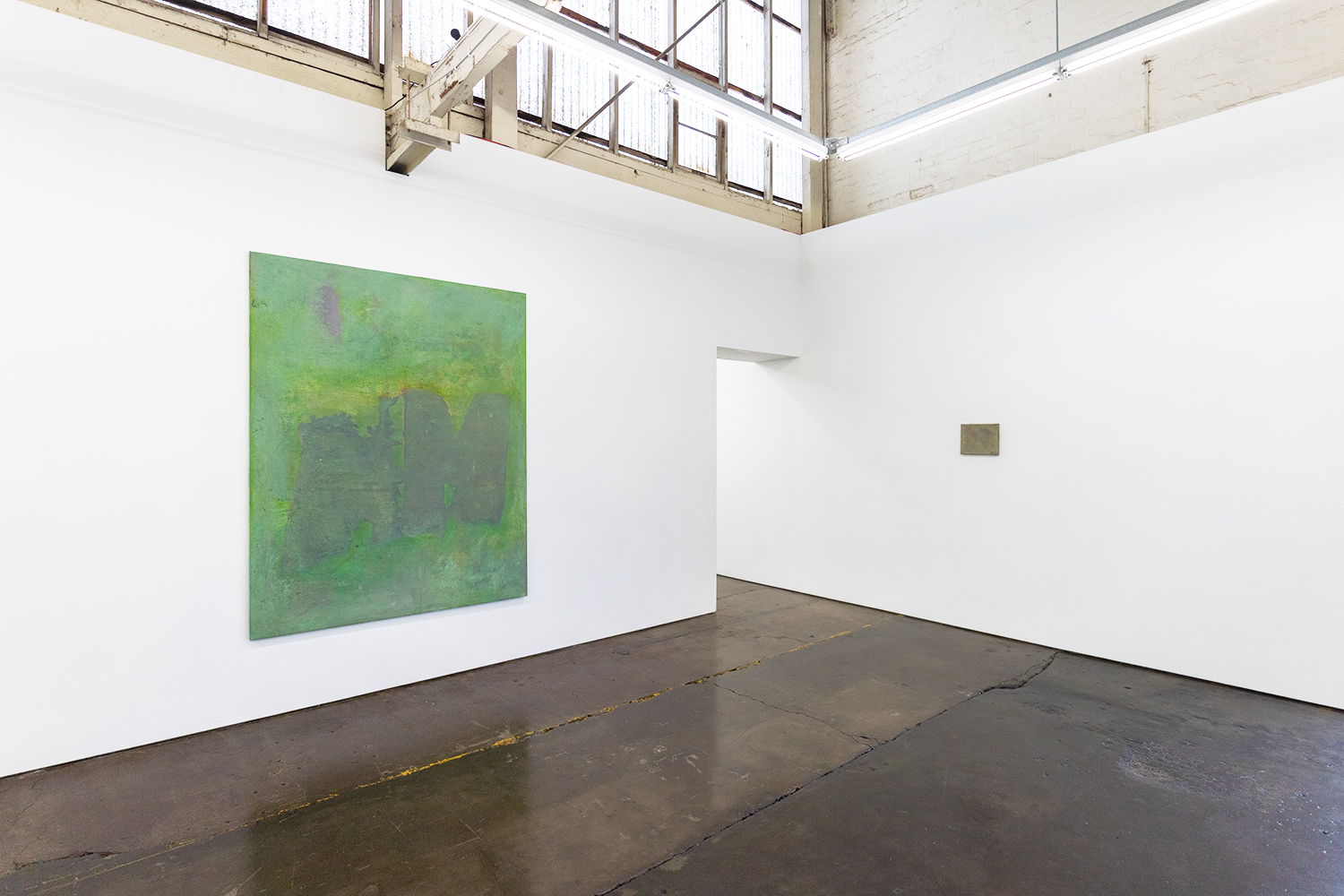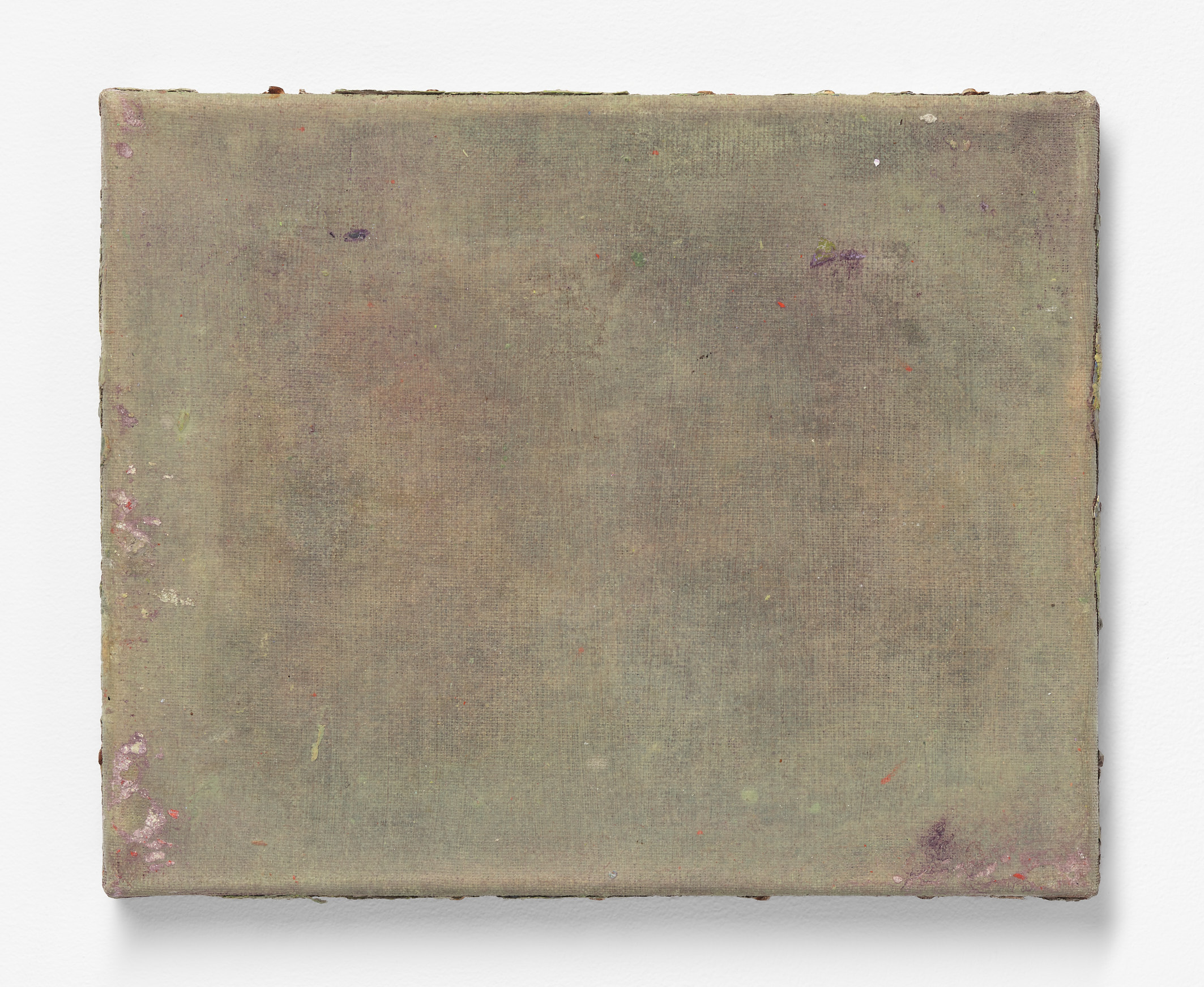Luke Brennan
09.09.2022 - 08.10.2022
Luke Brennan is a visual artist whose work germinates within the constructs of painting. He uses organic materials and biomorphic forms to cause disruptions in the flat surface of the painted picture. Repeated cycles of creation and reduction obltiterate any trace of the artist, and all evidence of process. The painting appears degraded, singular and densely layered, as if a relic, its definition loose and its origins undefined.
Luke Brennan graduated from the Sydney College of the Arts with First Class Honours in 2018 and has presented in a number of solo and group shows in Sydney, Melbourne, and Europe.
ABSTRACT ADDICTION
KROKODIL AESTHETICS AND SLIME DYNAMICS
Abstraction is a drug. From the very first rapture it reveals its true addictive nature, and, like many drugs taken long enough, can lead its addict to the gutter. In said gutter, abstraction becomes looser and viscous, both and at once layered and crumbling, an outright dissecting haze.
Within this gutter of abstraction there is an embrace of base, a destabilising device whose disruption is a unique form of vitalism — a force now dependent on addiction. This damp slimy squalid baseness is linked to a particular abstract substance, one crude and uninhibited, while other stimulants associated with abstraction evoke a more restrained approach in their addictive dedication. This latter is the land of monochromes, slick surfaces, high fabrication, and perfect edges, while the former oozes with medium, endless layers adhering and falling from the surface, drips, drops, smears, and smudges. Both are in communion with the historic canon and have even been known to cross-pollinate (poly-partake) on occasion, an act referencing the universality of medium and conceptualism (unwritten rules no junkie can deny).
The addict associated with ooze and smears thirsts for an abstract nirvana at any cost, accepting a far from TGA approved substance, rather one of necessity. These abstractionists will admit even toxic necrosis to achieve the desired effect. Sourced from the remains of a Soviet bunker a stimulant like krokodil is a less than perfect desomorphine, offering sedation and analgesia (and transcendental abstract immensity). Its inexorable necrosis sees abstraction crumble through a slimy scaley layering, an overdose in the name of the most substantial painterly gesture, or perhaps a balancing act that can become visibly rich and tactile should it survive.
The layered ooze concerning this singular addictive dance with abstraction is one of dynamics, often relegated to conversations of messy residue, ejaculations and mindless mark making. Yet it is anything but. This is the art of ‘slime dynamics’ and it is representative of life and vitality, albeit a life partial to excess and with a thirst for annihilation. Slime is both a physical and metaphysical object of life given and taken away. It is “…the proof of cohesion and the hint of its undoing, the evidence that something disgusting happened, some foul thing called life. Something that will fill space till the cosmos burns too low for anything to again cohere, ending only with an ocean of putrescence spilling over into the boundless void of extinction.”* To think slime when engaging with the painterly surfaces of the abstract addict we are dissecting, is to talk to the conflict between the cliché of abstraction and those that truly engage in its dynamics.
The larger dynamism at play here between cohesion and extinction, presents a fragility and an extremist act towards creation in the hands of the abstract addict — one we have seen to result, uncontrollably, in abstraction concerned with layers of loose and viscous (and slimy) surfaces. They may call to mind the topography of a foreign abstract land, but simultaneously something entirely undefinable, rather crafted under the influence of abstraction within a state of unknowable horror. In his 1923 tale The Unnameable, H.P. Lovecraft summarised the unnameable entity as best he could: “a gelatin — a slime — yet it had shapes, a thousand shapes of horror beyond all memory.”† Abstraction holds a thousand shapes (often formed, coherent, in a slimy mess) and in this case governed by an uncontrollable self-perpetuating addiction — of krokodil aesthetics.
* Ben Woodard, Slime Dynamics Generation, Mutation, and the Creep of Life, Winchester: Zero Books, 2012, p. 38
† HP Lovecraft, The Unnameable, in H.P. Lovecraft The Fiction Complete and Unabridged, New York: Barnes and Noble, 2008, p 260
Jack Willet, August 2022
Luke Brennan graduated from the Sydney College of the Arts with First Class Honours in 2018 and has presented in a number of solo and group shows in Sydney, Melbourne, and Europe.
ABSTRACT ADDICTION
KROKODIL AESTHETICS AND SLIME DYNAMICS
Abstraction is a drug. From the very first rapture it reveals its true addictive nature, and, like many drugs taken long enough, can lead its addict to the gutter. In said gutter, abstraction becomes looser and viscous, both and at once layered and crumbling, an outright dissecting haze.
Within this gutter of abstraction there is an embrace of base, a destabilising device whose disruption is a unique form of vitalism — a force now dependent on addiction. This damp slimy squalid baseness is linked to a particular abstract substance, one crude and uninhibited, while other stimulants associated with abstraction evoke a more restrained approach in their addictive dedication. This latter is the land of monochromes, slick surfaces, high fabrication, and perfect edges, while the former oozes with medium, endless layers adhering and falling from the surface, drips, drops, smears, and smudges. Both are in communion with the historic canon and have even been known to cross-pollinate (poly-partake) on occasion, an act referencing the universality of medium and conceptualism (unwritten rules no junkie can deny).
The addict associated with ooze and smears thirsts for an abstract nirvana at any cost, accepting a far from TGA approved substance, rather one of necessity. These abstractionists will admit even toxic necrosis to achieve the desired effect. Sourced from the remains of a Soviet bunker a stimulant like krokodil is a less than perfect desomorphine, offering sedation and analgesia (and transcendental abstract immensity). Its inexorable necrosis sees abstraction crumble through a slimy scaley layering, an overdose in the name of the most substantial painterly gesture, or perhaps a balancing act that can become visibly rich and tactile should it survive.
The layered ooze concerning this singular addictive dance with abstraction is one of dynamics, often relegated to conversations of messy residue, ejaculations and mindless mark making. Yet it is anything but. This is the art of ‘slime dynamics’ and it is representative of life and vitality, albeit a life partial to excess and with a thirst for annihilation. Slime is both a physical and metaphysical object of life given and taken away. It is “…the proof of cohesion and the hint of its undoing, the evidence that something disgusting happened, some foul thing called life. Something that will fill space till the cosmos burns too low for anything to again cohere, ending only with an ocean of putrescence spilling over into the boundless void of extinction.”* To think slime when engaging with the painterly surfaces of the abstract addict we are dissecting, is to talk to the conflict between the cliché of abstraction and those that truly engage in its dynamics.
The larger dynamism at play here between cohesion and extinction, presents a fragility and an extremist act towards creation in the hands of the abstract addict — one we have seen to result, uncontrollably, in abstraction concerned with layers of loose and viscous (and slimy) surfaces. They may call to mind the topography of a foreign abstract land, but simultaneously something entirely undefinable, rather crafted under the influence of abstraction within a state of unknowable horror. In his 1923 tale The Unnameable, H.P. Lovecraft summarised the unnameable entity as best he could: “a gelatin — a slime — yet it had shapes, a thousand shapes of horror beyond all memory.”† Abstraction holds a thousand shapes (often formed, coherent, in a slimy mess) and in this case governed by an uncontrollable self-perpetuating addiction — of krokodil aesthetics.
* Ben Woodard, Slime Dynamics Generation, Mutation, and the Creep of Life, Winchester: Zero Books, 2012, p. 38
† HP Lovecraft, The Unnameable, in H.P. Lovecraft The Fiction Complete and Unabridged, New York: Barnes and Noble, 2008, p 260
Jack Willet, August 2022


